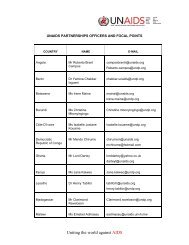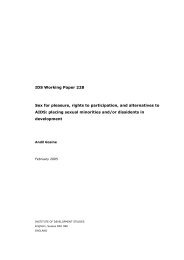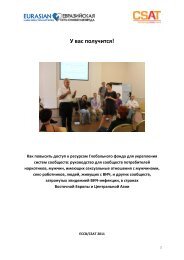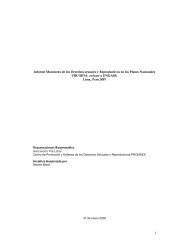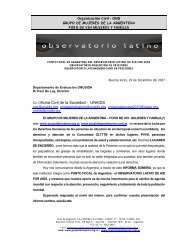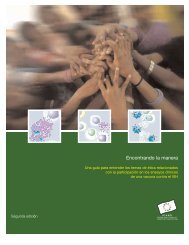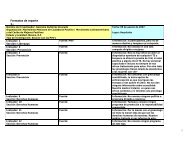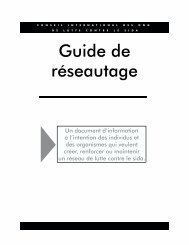Missing the Target #5: Improving AIDS Drug Access ... - CD8 T cells
Missing the Target #5: Improving AIDS Drug Access ... - CD8 T cells
Missing the Target #5: Improving AIDS Drug Access ... - CD8 T cells
You also want an ePaper? Increase the reach of your titles
YUMPU automatically turns print PDFs into web optimized ePapers that Google loves.
Ugandaby Richard Hasunira, Prima Kazoora, Aaron Muhinda,Rosette Mutambi, and Beatrice WereThe limited provision of support and care services to PLWHA remains <strong>the</strong> weakestlink in <strong>the</strong> national response to <strong>the</strong> HIV/<strong>AIDS</strong> epidemic in Uganda. For <strong>the</strong> mostpart, <strong>the</strong> provision of such services has been left to <strong>the</strong> non-governmental sector.The major NGOs providing such services, including TASO, Uganda Cares, and AIM,have helped people access ART, but <strong>the</strong>ir capacity is limited.The latest figures from <strong>the</strong> MoH indicate that <strong>the</strong> number of people accessing ARTreached 100,000 in <strong>the</strong> 2006–2007 fiscal year. 1 That is far less than half of <strong>the</strong>estimated 234,500 who need treatment now. As of October 2007, <strong>the</strong>re were atotal of 212 ART centers across <strong>the</strong> country.At <strong>the</strong> accredited centers, ARVs are provided free of charge, but private facilitiescharge for consultation and treatment of OIs. PLWHA also must arrange and payfor <strong>the</strong>ir own transport, which can be complicated if not impossible when <strong>the</strong>y livefar from treatment centers. (Transport costs are particularly significant during drugstock-outs, when patients are simply told to “keep checking” or are referred too<strong>the</strong>r, usually more distant centers. Referral for a routine CD4 count test can createa burden: Most up-country districts do not have CD4 count machines; as a result,many patients must travel hundreds of kilometers to obtain such tests.)The ongoing difficulties associated with accessing ART are <strong>the</strong> primary reasonsbehind <strong>the</strong> high drop-out rate from treatment.<strong>Drug</strong> registration processAll pharmaceutical products intended for human use are supposed to be registeredby <strong>the</strong> National <strong>Drug</strong> Authority (NDA) before <strong>the</strong>y are sold or used in Uganda.The registration procedures are set out in <strong>the</strong> guidelines on <strong>the</strong> Registration ofPharmaceuticals for Human Use in Uganda (revised July 2006).The drug registration process is working relatively well in Uganda. The country hasan elaborate drug registration procedure set out in <strong>the</strong> guidelines on Registration ofPharmaceuticals for Human Use in Uganda. The only problem is that <strong>the</strong> process isfairly cumbersome and registration can take as long as six months at a minimum—and that length of time is potentially applicable only when <strong>the</strong> applicant does not97



